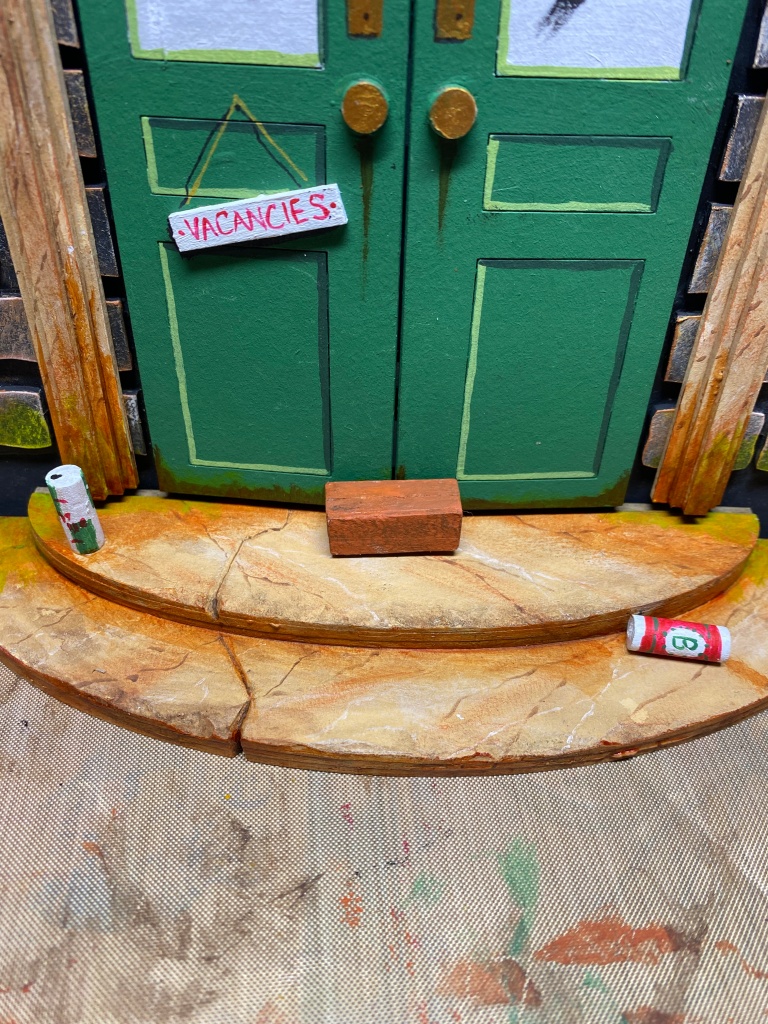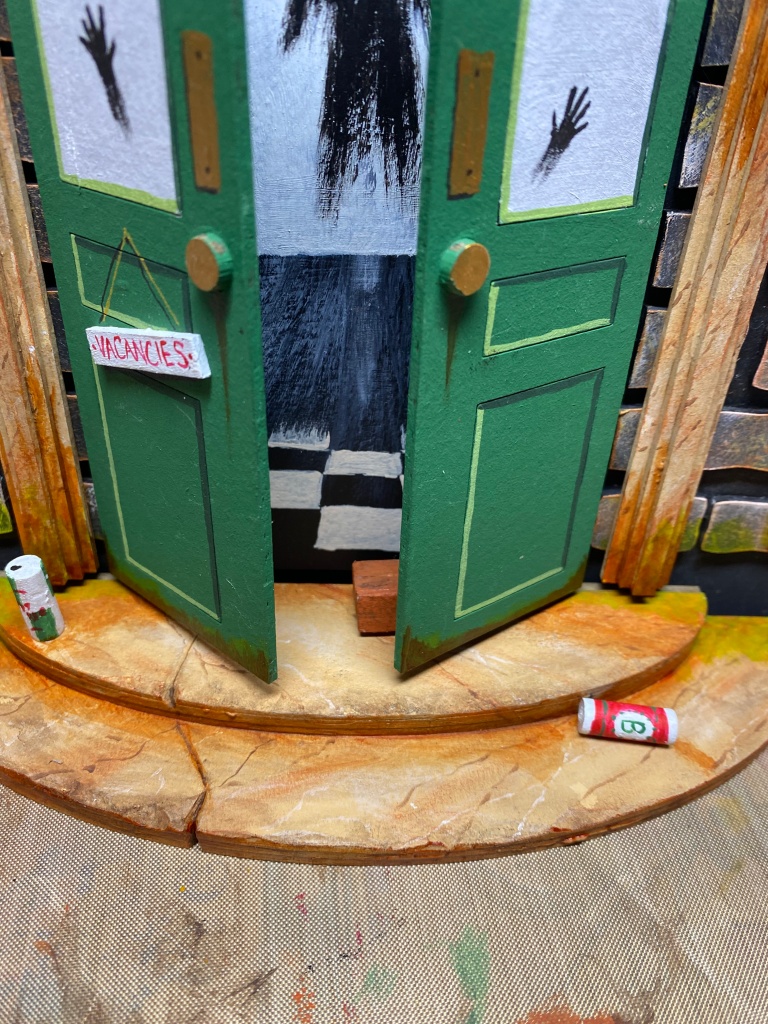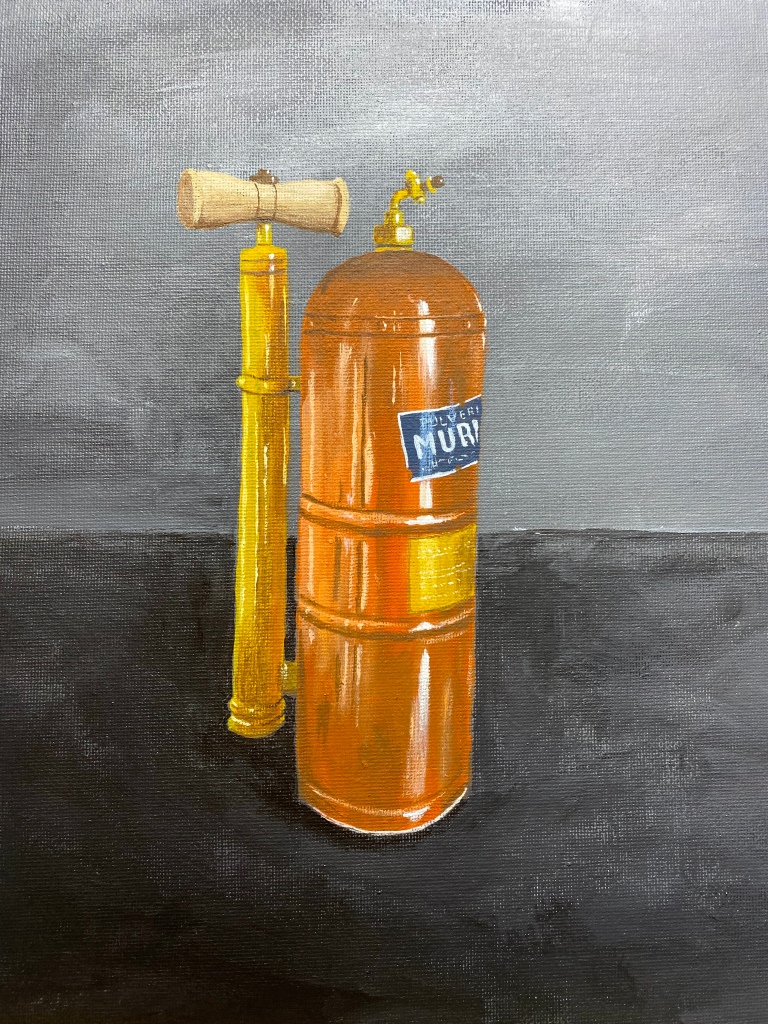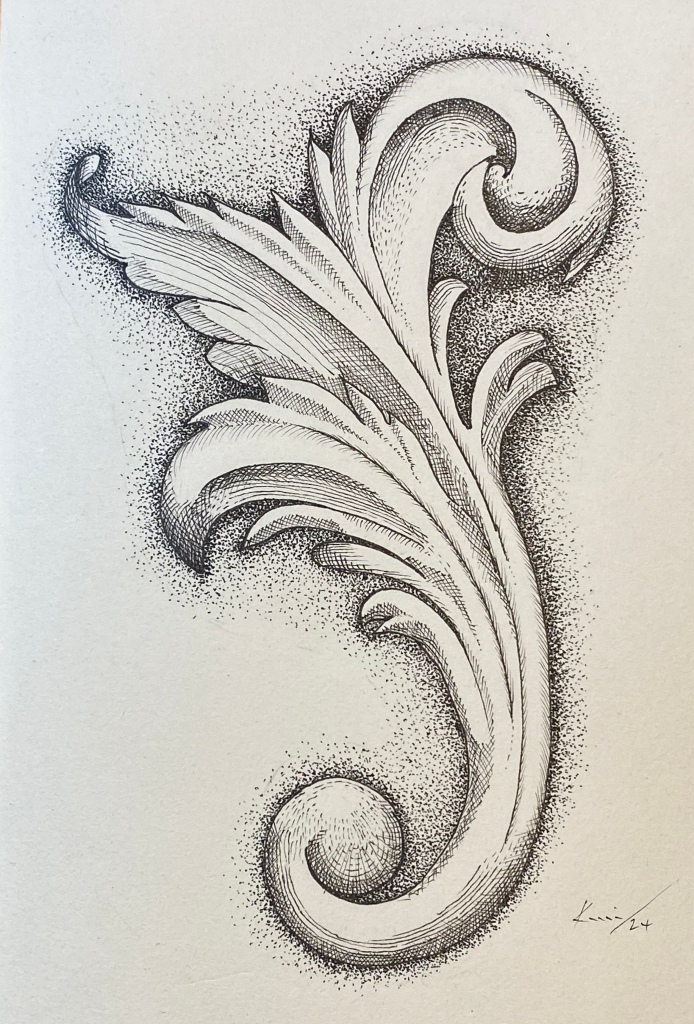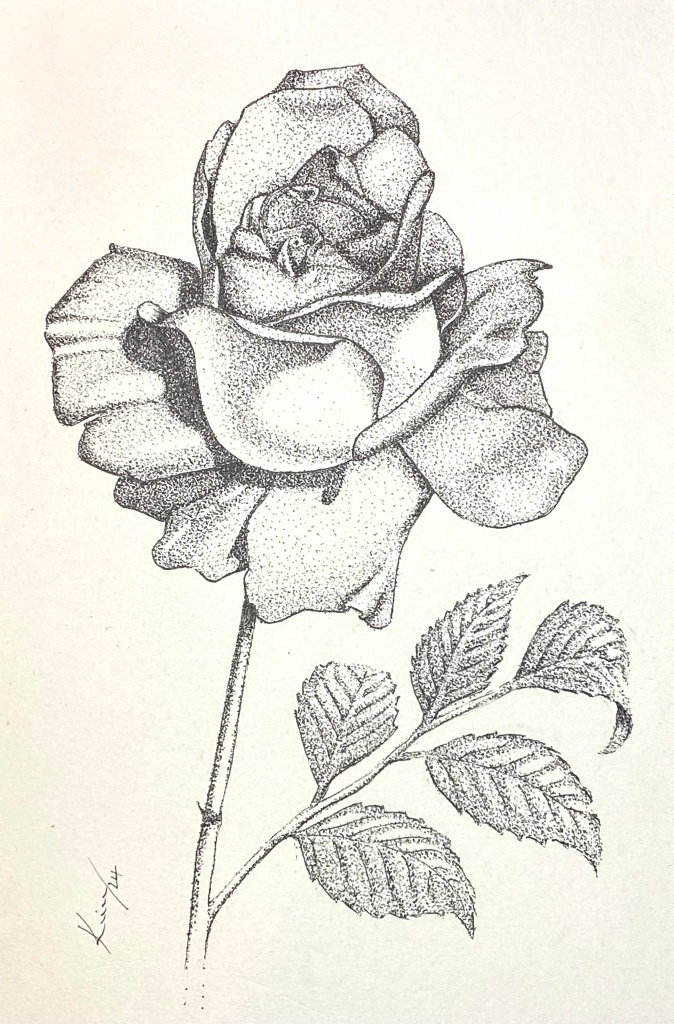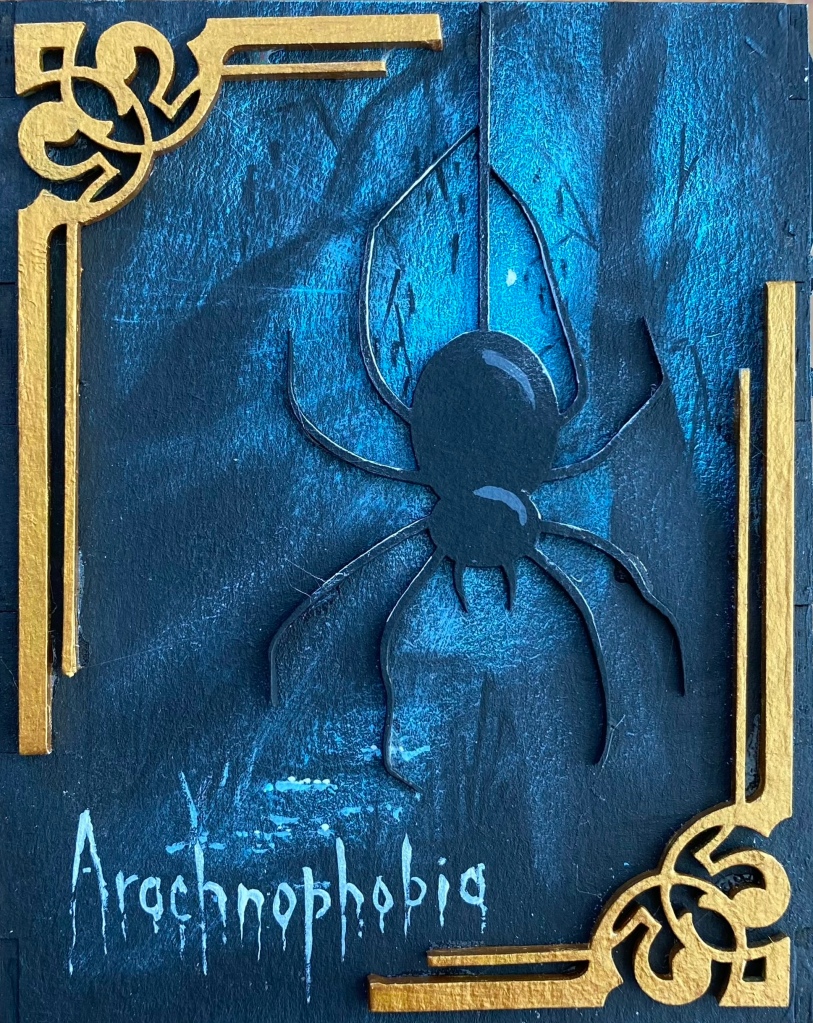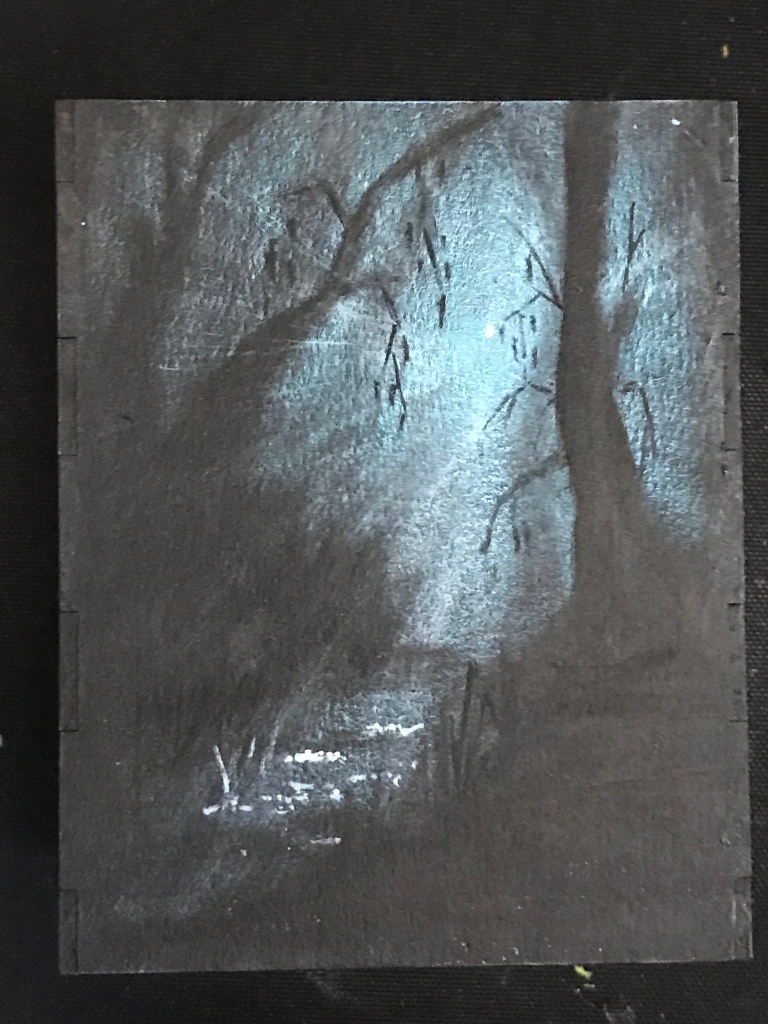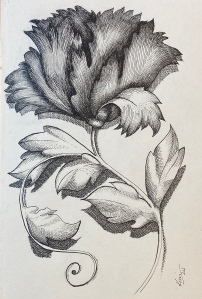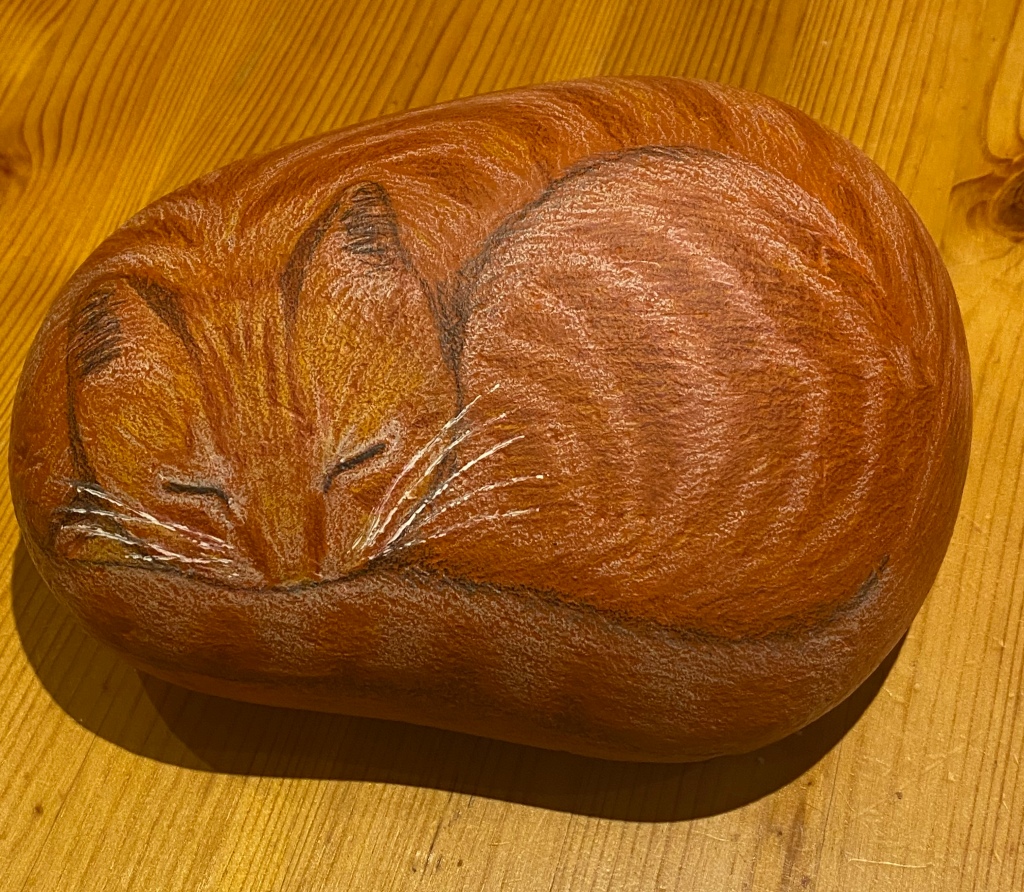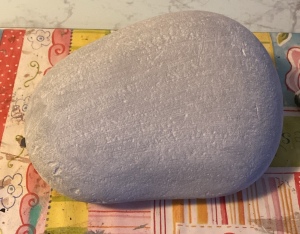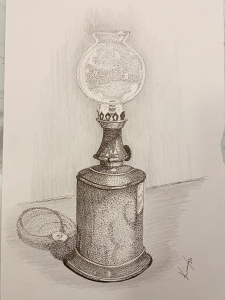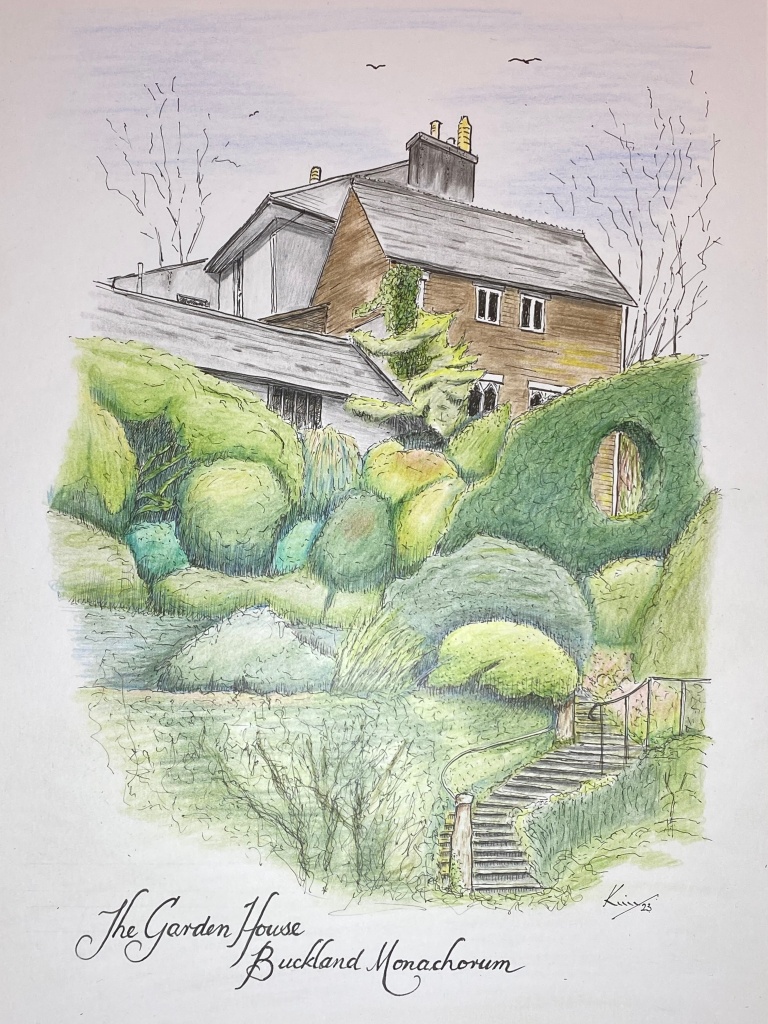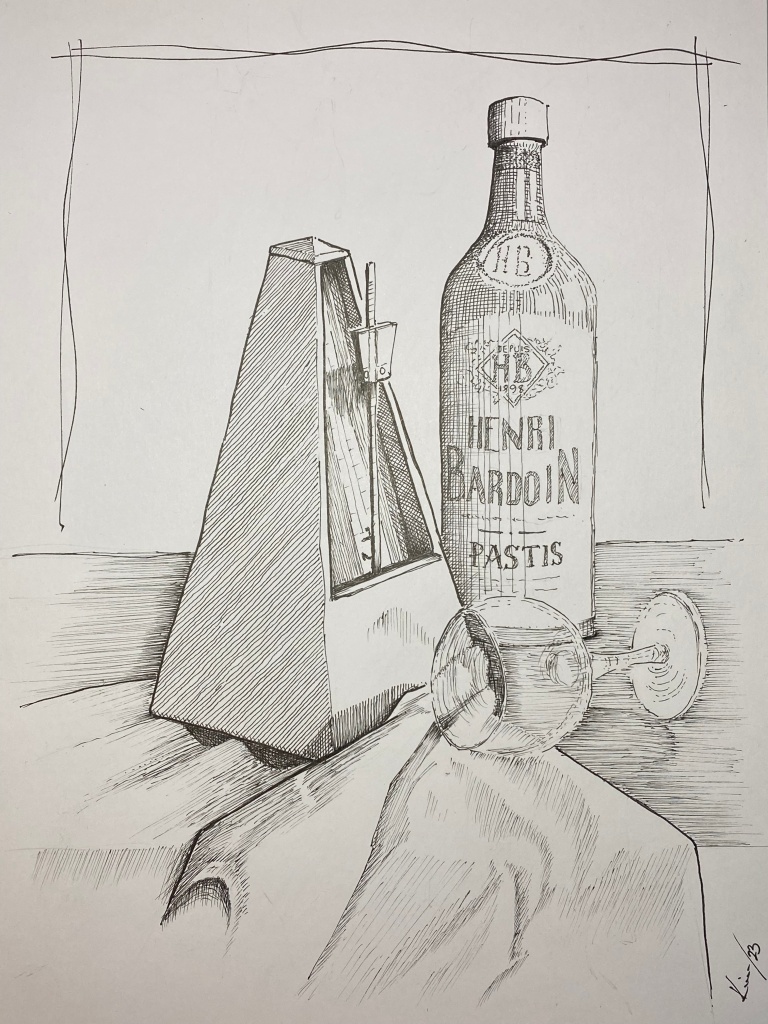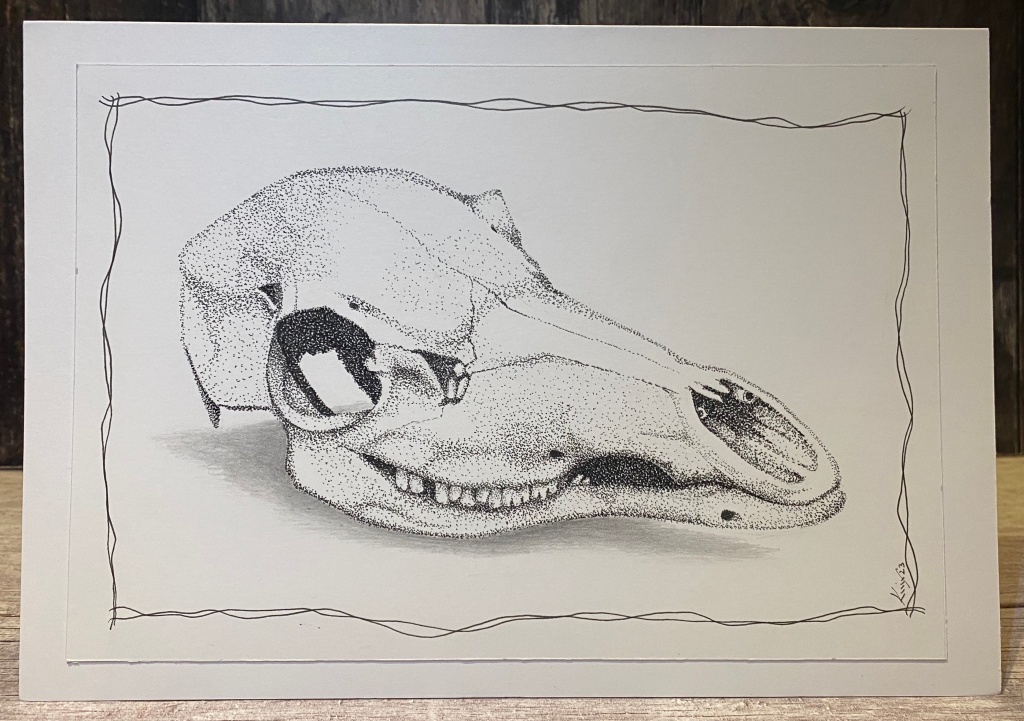Oh, good! Vacancies. I’m sure this will be a nice place to stay … or not.
Long time, no Tando! Di needed some samples at short-ish notice for a Create and Craft TV show. She sent me the large standing door kit. Tando kits are made from sturdy grey board and will take whatever decorative treatment you put on it – so your imagination can run wild! I even hacked the step with a craft knife to create a crack.
Other members of the design team used papers and inks, I used paint – what else!
I decided that a spooky, horror hotel would be fun, so here is The Phantom’s Inn.
The bricks are base coated in black, then dry brushed with colours to make them look like old stone. The arch, pillars, and steps are marbled – a faux effect to look like real marble. I dirtied it with a wash of Burnt Umber. A couple of old beer cans decorate the steps. The frosted glass of the doors show the hands of a customer who has decided not to stay – but the doors seem to be held shut with a brick. If we open the door we see the phantom looming along the passage.
It was finished and posted in good time and was proudly displayed, centre stage, for the show, alongside all the other design team samples. Let’s hope Tando sold loads.
Check out Tando’s web site for all the super goodies available.
https://www.tando-creative.co.uk/
